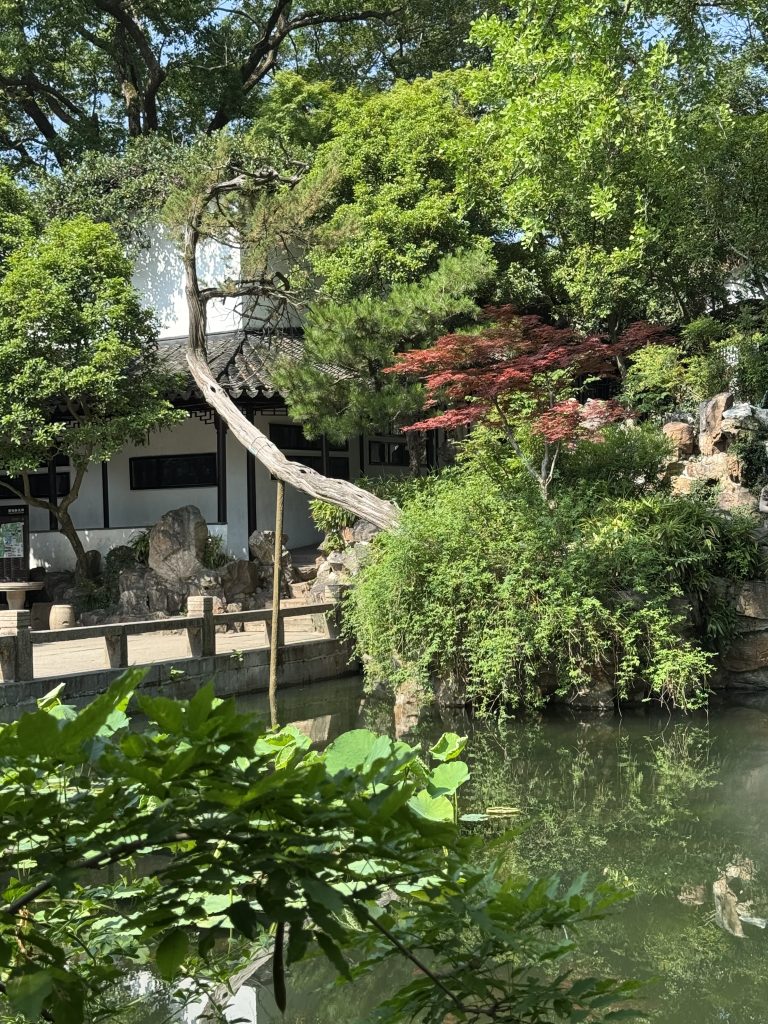
Marco Polo wrote, “There is a heaven in the sky and a heaven on Earth and that is Suzhou.” 800 years ago, this was a city of canals, which reminded him of his home city of Venice.
6 million people live here- as opposed to 28 million in Shanghai. “In China, any city less than 10 million is a small city.”
Suzhou was established 1,000 years ago. It’s on the Yangtze River.
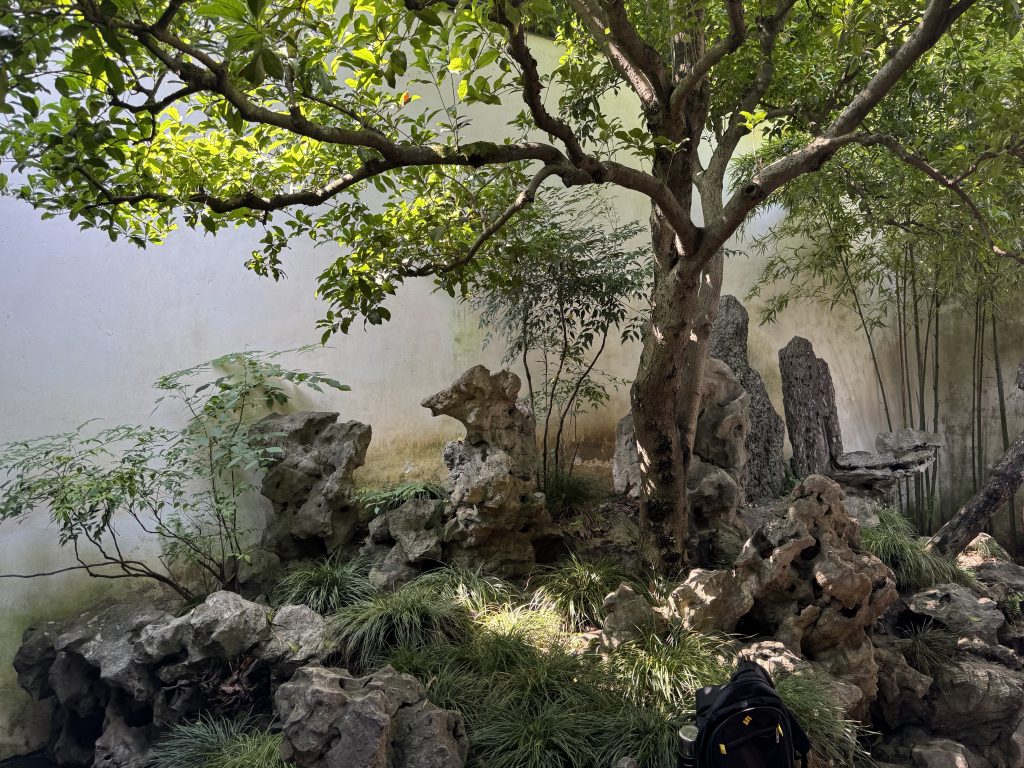
This garden is 500 years old. Lingering Garden is on the world heritage list.
This used to be a rich family’s property. It took the Liu family 16 years to complete the garden. 3 or 4 generations lived there together.
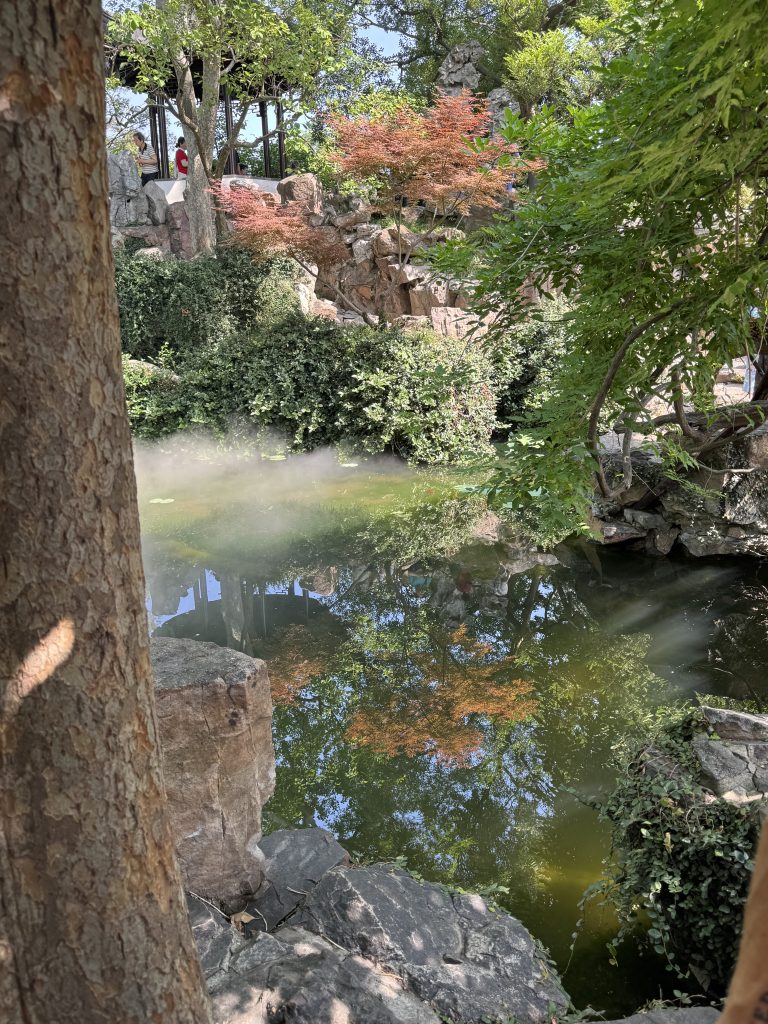
Lotus fish pond. They are spraying mist across the pond for the lotus plants- and for the visual.
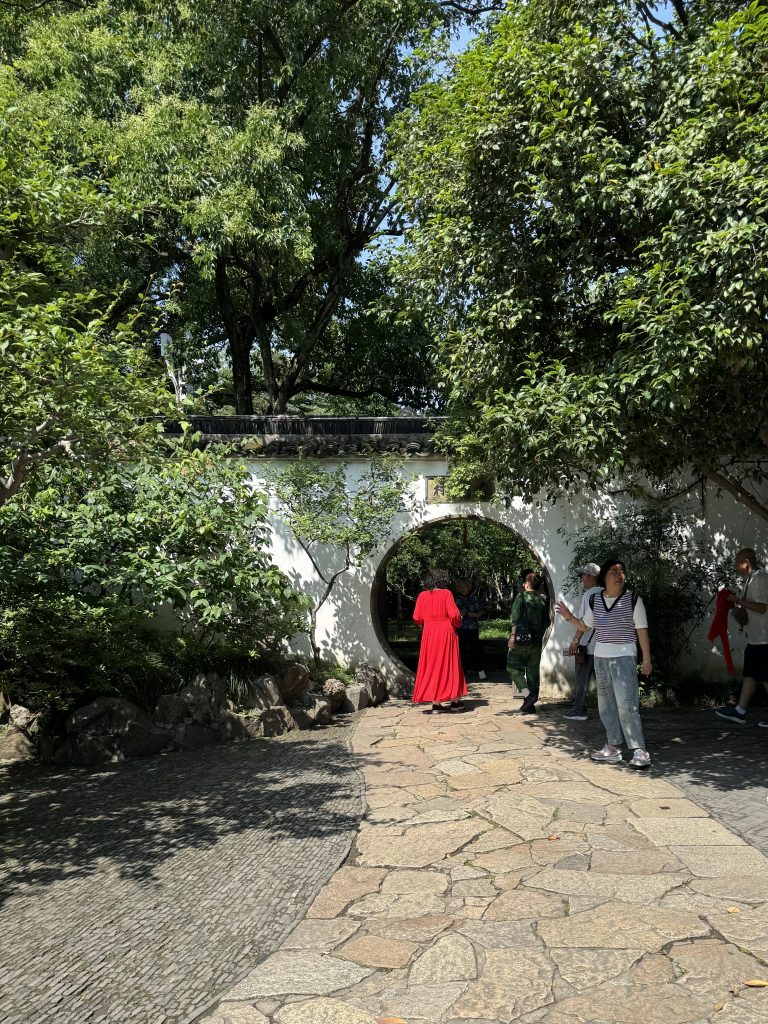
This place is not on a huge parcel of land, but it’s cleverly designed to make the most of the space and to attract every breath of air in this humid place.
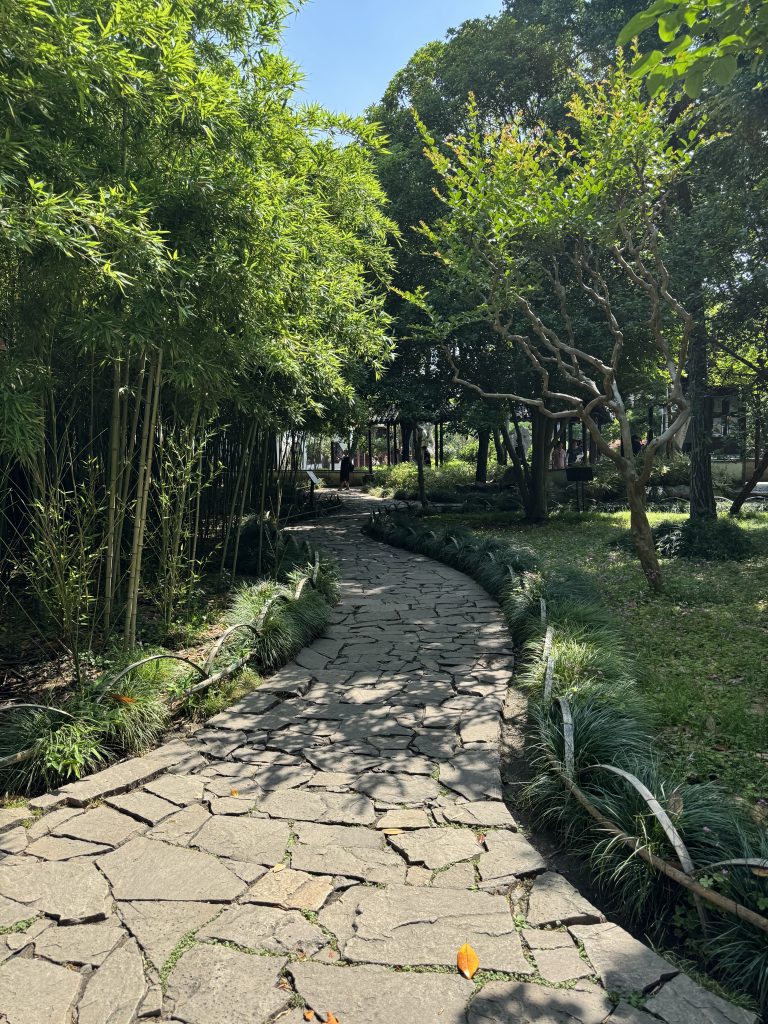
The family made their money from silk and salt. You needed permission from the emperor to sell salt, so this family was very wealthy. Everyone needs salt.
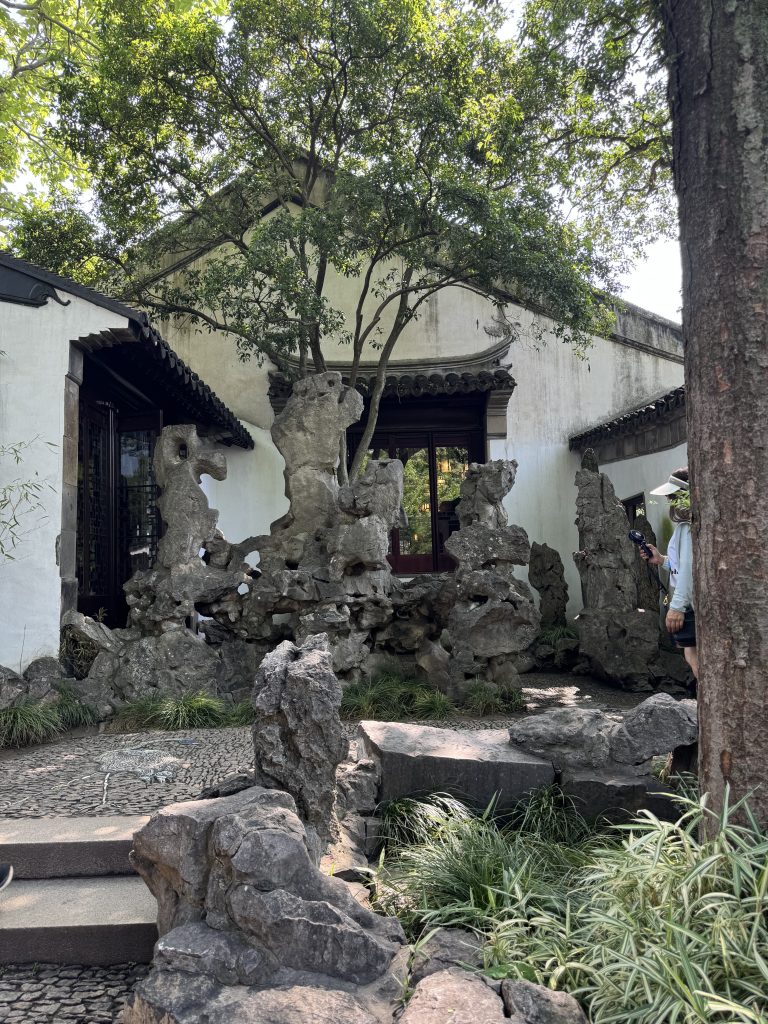
The rocks here are the same as in the Forbidden City. They come from the lake here.
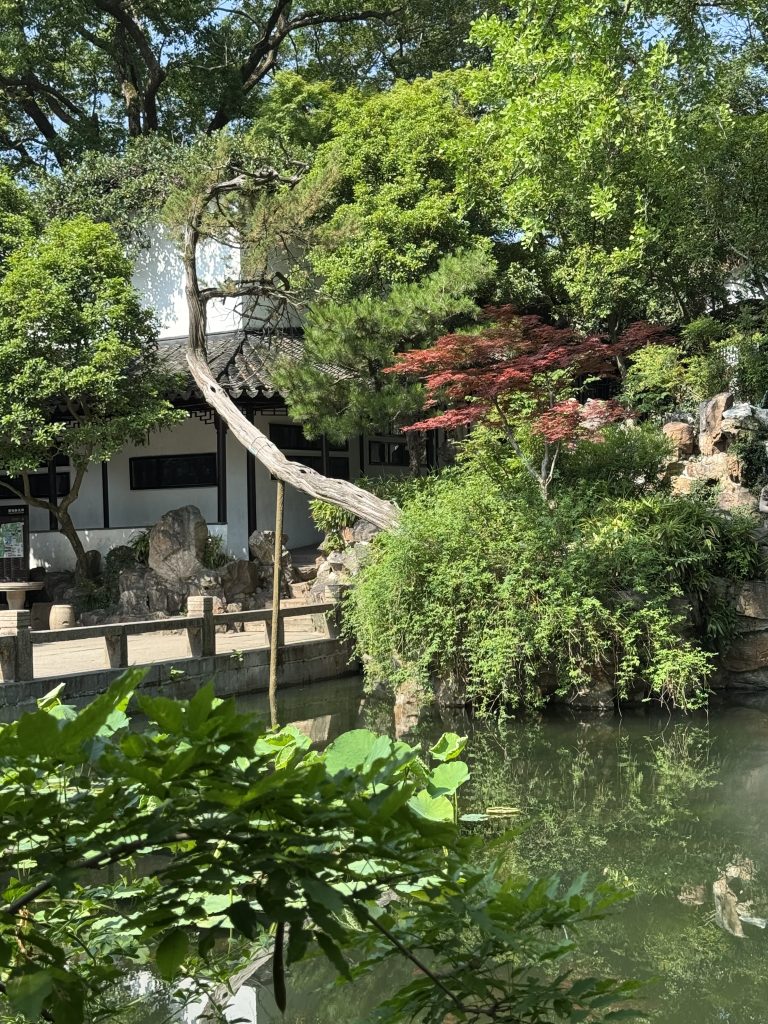
There’s a 500 year old ginkgo tree over the lotus. 5 ginkgo seeds a day are good for the brain, so Summer says.
They bring the rocks from the lake during winter, when the lake and canals are frozen so they can slide the rocks. They were a huge status symbol because it was so expensive.
The people live upstairs to try and keep away from the constant humidity. They also wear silk in preference to anything else.
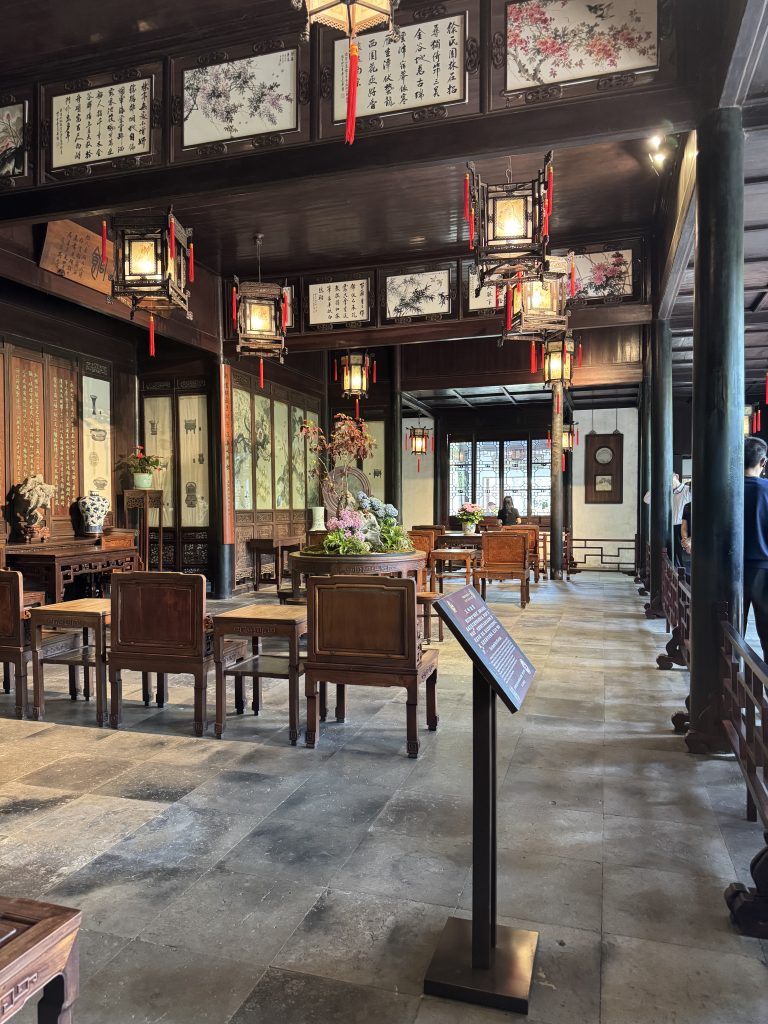
Sitting room.
This is the biggest place for the family to entertain. Mahogany furniture, uncomfortable so needed cushions. The room opens up to a huge rock garden, which is a huge boast about their wealth.
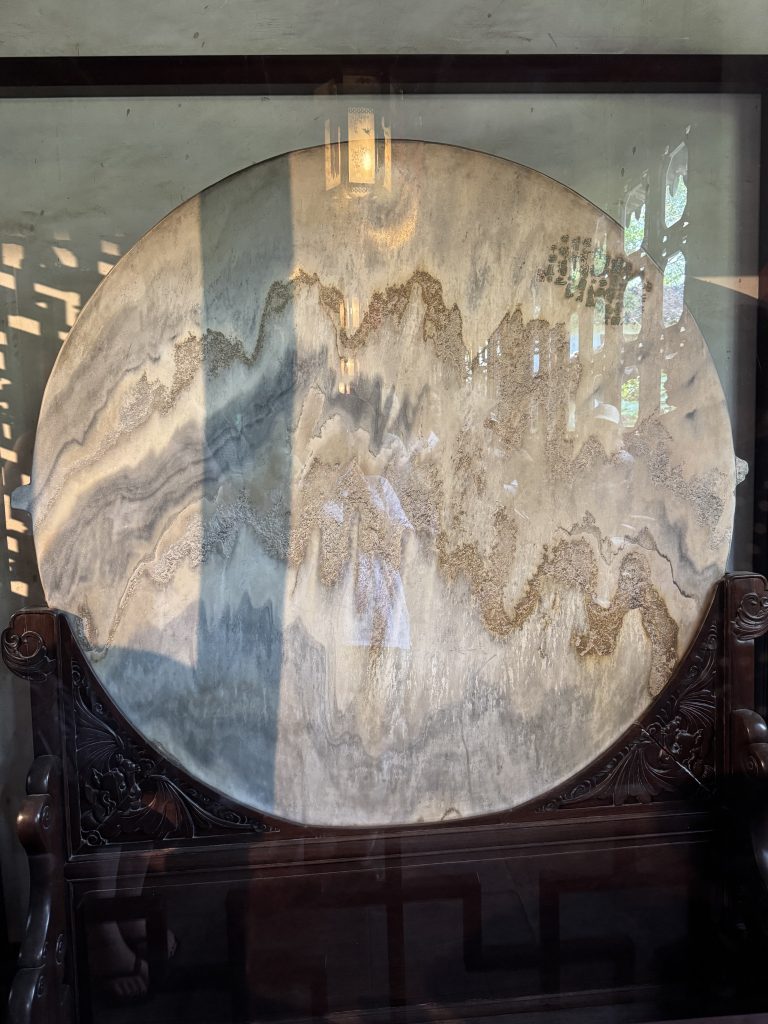
Family treasure, passed down for generations. This was really impressive. A big single marble piece with natural colours. River, mountain and a full moon in the sky. The characters are man made, but everything else is natural.
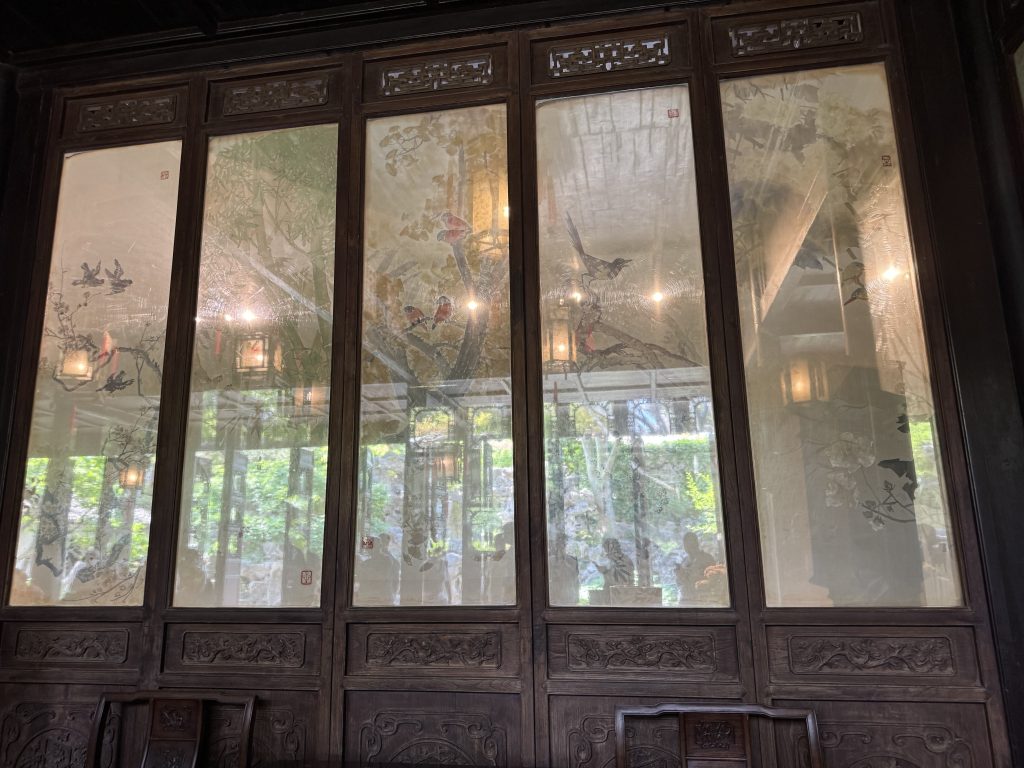
Another family treasure was this silk painting, you can see through it. Good for bigger rooms. It also hides the young girls from outsiders. It allowed the women to check out prospective suitors, being able to see and hear them secretly.
This was important, as marriages were arranged then. Summer said that the first time her grandparents met was on their wedding day. “Fortunately, they fell in love after that,” she said.
Remember our guide in Beijing? Tina also had an arranged marriage, but she definitely didn’t get a happy life. Parents don’t always know the best for their children.

Windows were made of rice paper for the poor people, but rich people used very thin white silk.
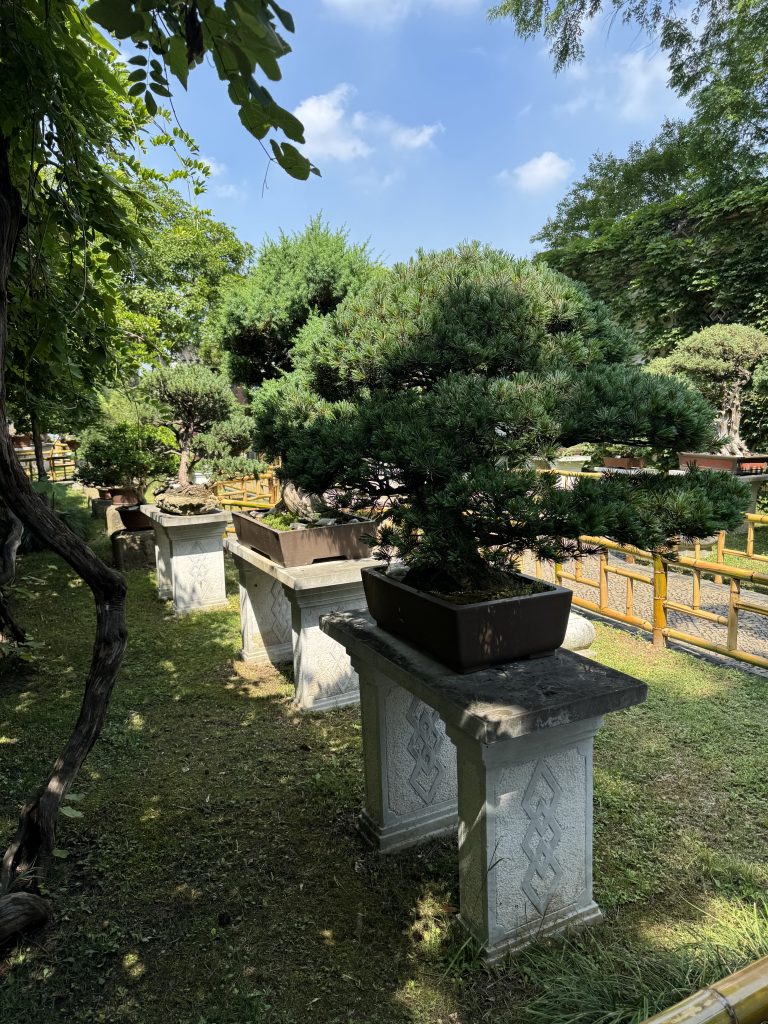
The bonsai sections were incredible. There were probably 100+ , which in a way was a shame. Every single one of them was worthy of so much attention, but it was the reverse of “You can’t see the forest for the trees.”
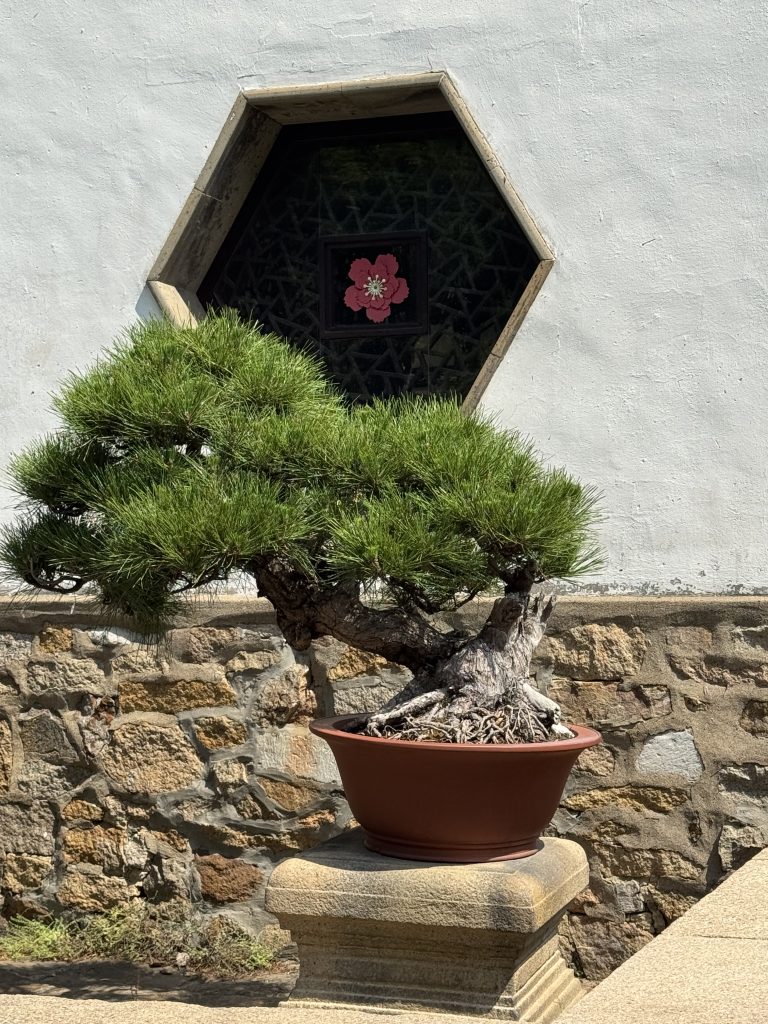

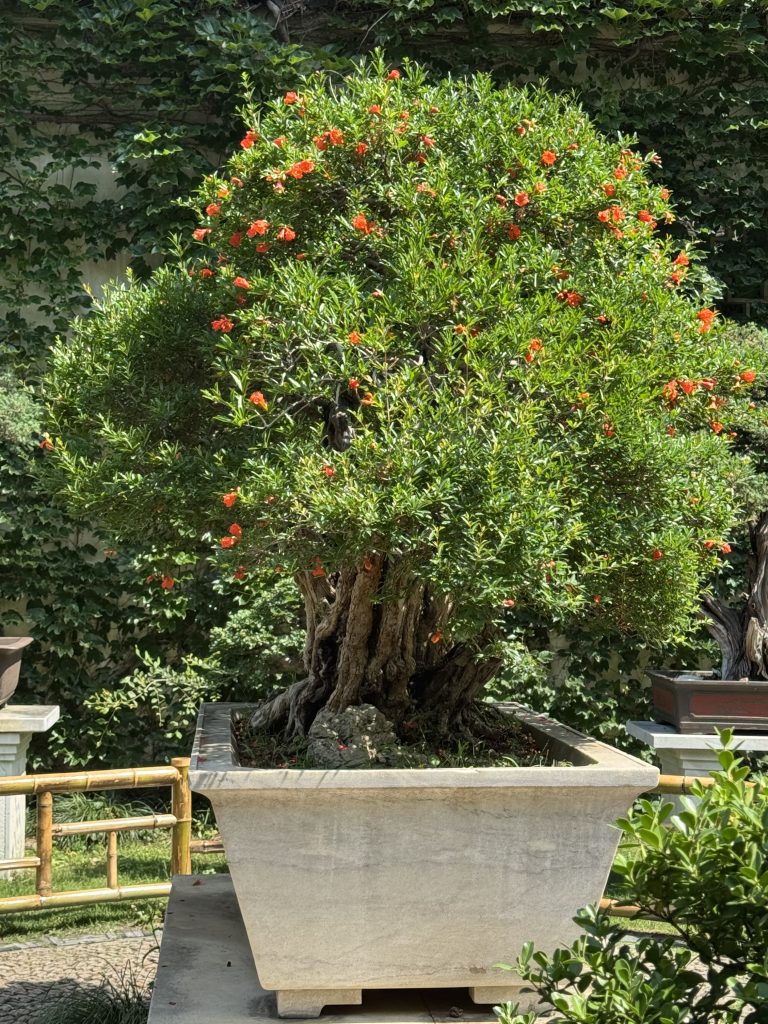
Dad used to bonsai trees and there are still a couple surviving. These ones were well over 100 years old. Just look at the trunks!
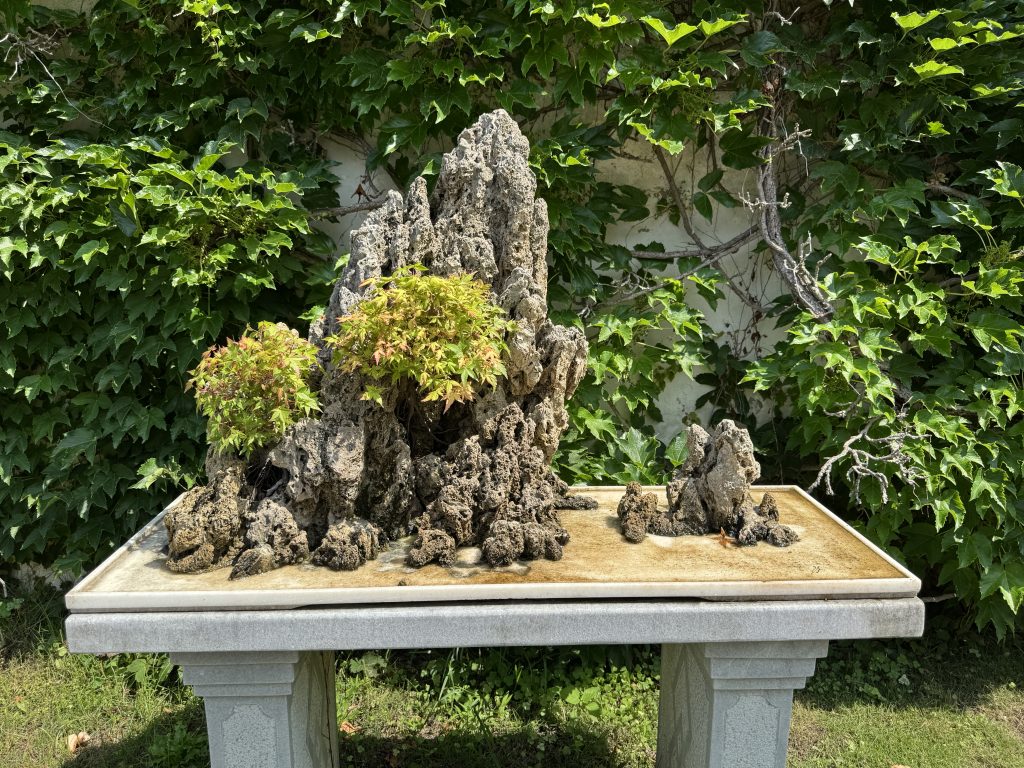
I don’t think I’ve ever seen bonsais like this before- made to grow on rocks.

They look like South Pacific islands.
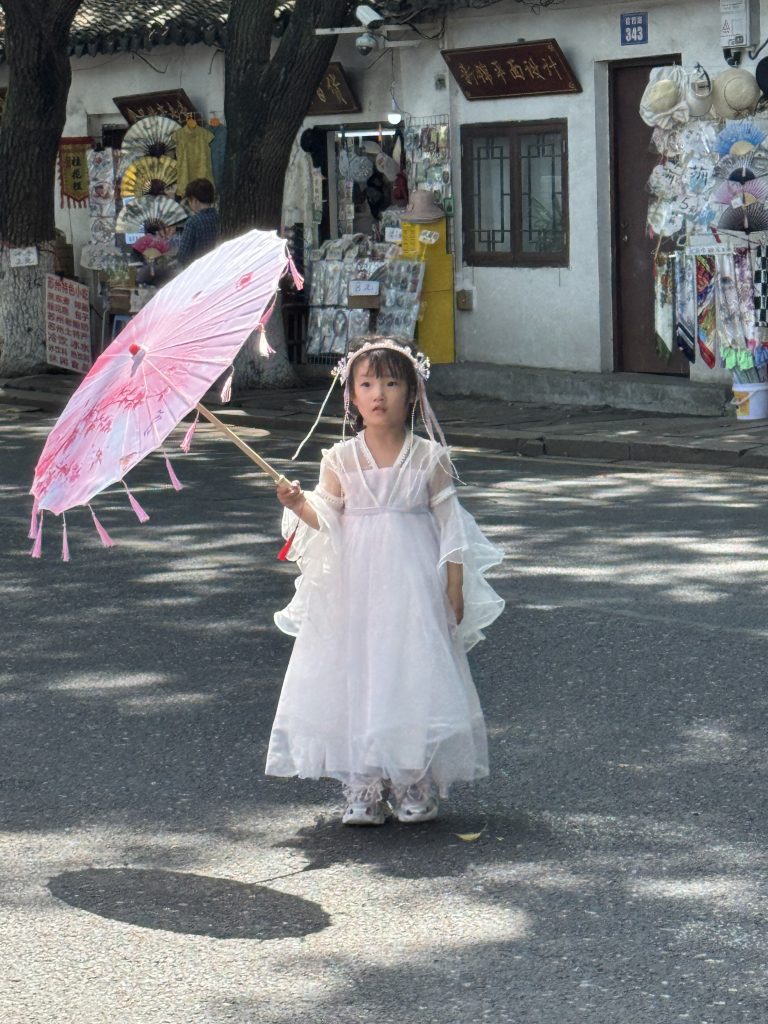
This place was amazing. As I walked through, I could imagine the wealthy family living in this place built to catch the breezes and the shade. It would have been a pleasant place to live.
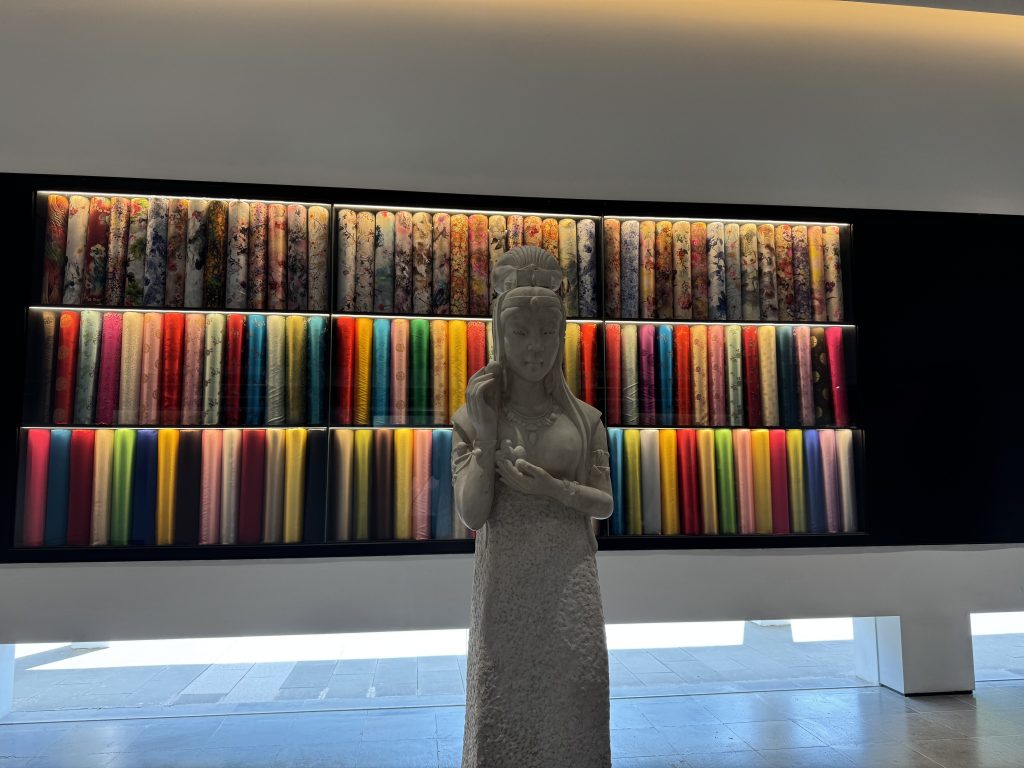
Our next stop was a silk factory. The reason these China tours are so cheap is because the Chinese government subsidises them, requiring that the tourists get paraded around to various factories. They know that we’re mostly going to buy stuff.
5,000 years ago, this woman called Leizu brought the knowledge of silk making to China. This proved to be an absolute bonanza for China, as silk has been one of China’s major exports ever since.
They have a temple for Leizu here, as this is the silk capital of China.
2,000 years later, China was exporting silk to Europe via the Silk Road, and by sea via Shanghai, Malacca and Venice.
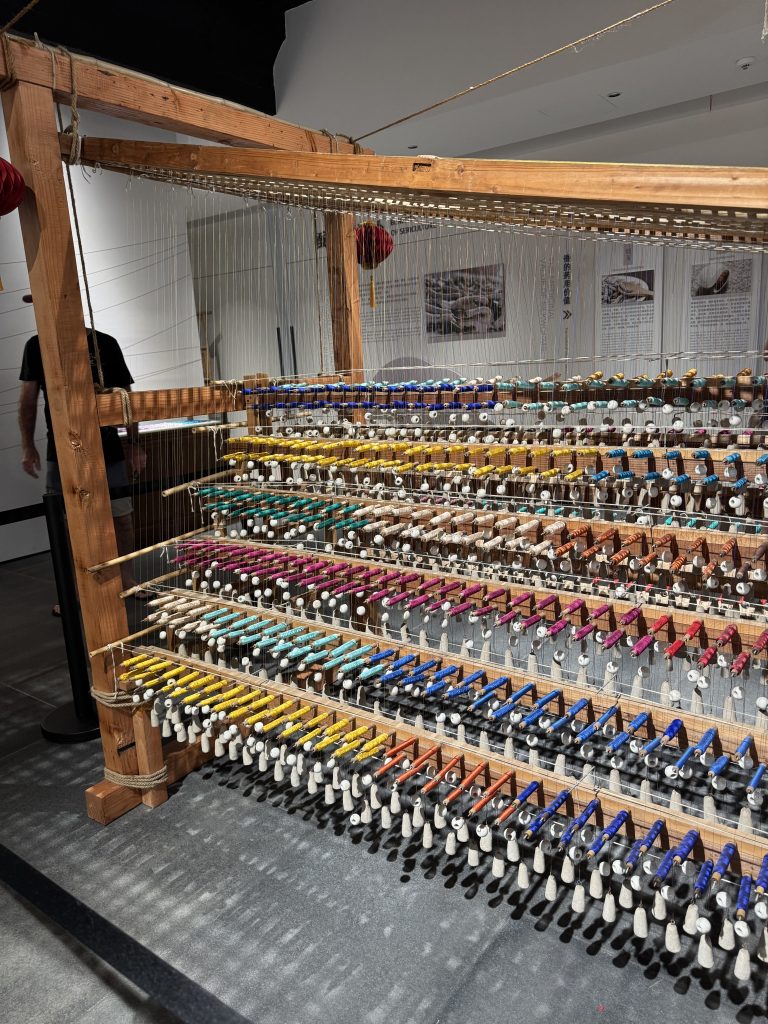
Nowadays, the silk industry is controlled by the government.
They certainly made a killing here today. Most couples bought something, and it was mostly bedding. Silk Donna’s, covers, sheets and pillowcases were flying out the door. I restrained myself and merely bought a scarf each for Mum and myself.
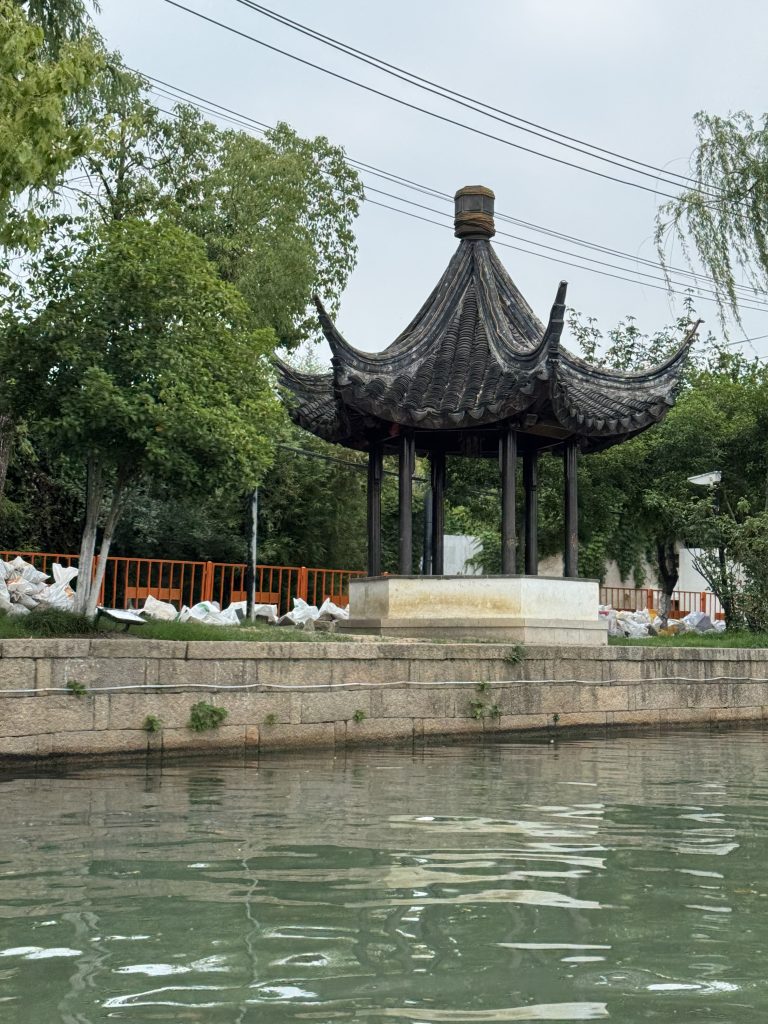
We went for a boat ride on a canal, where the fresh water came from the lake. When Marco Polo came here, the whole city was built around canals. Now there are only 18 canals left. They were dug 1,000 years ago.

The boats we were in were floating past the old houses. These are an oddity here as they’re privately owned. The government has what we would call a heritage listing over them, and they help people renovate them, as long as they’re within the guidelines.
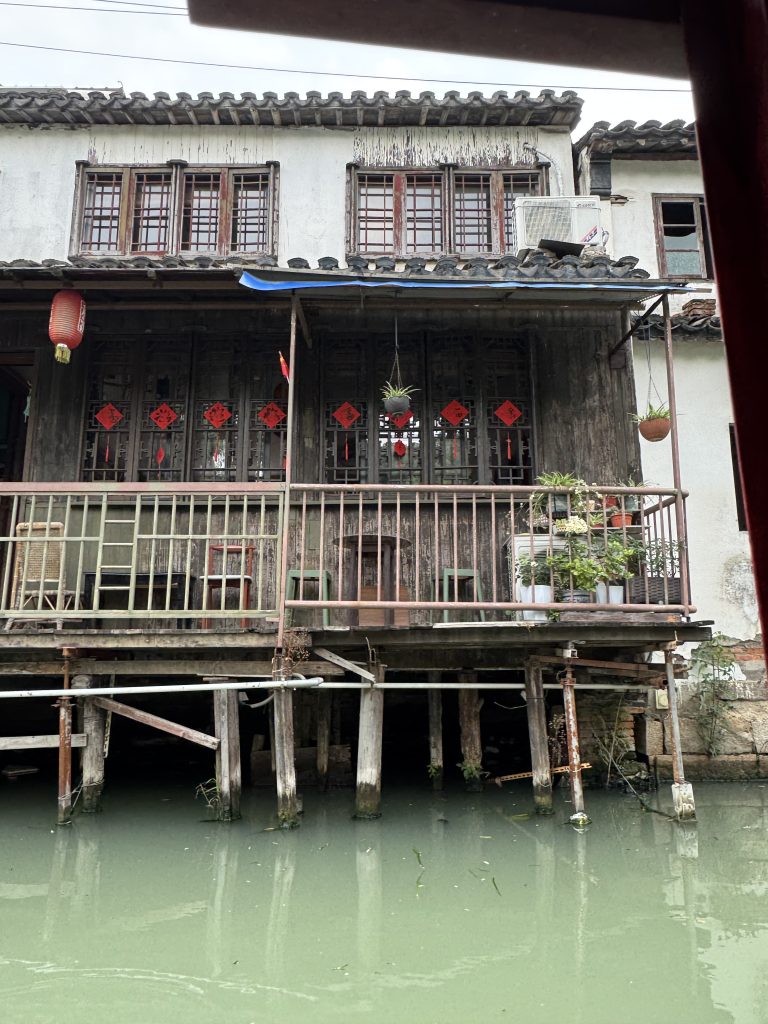
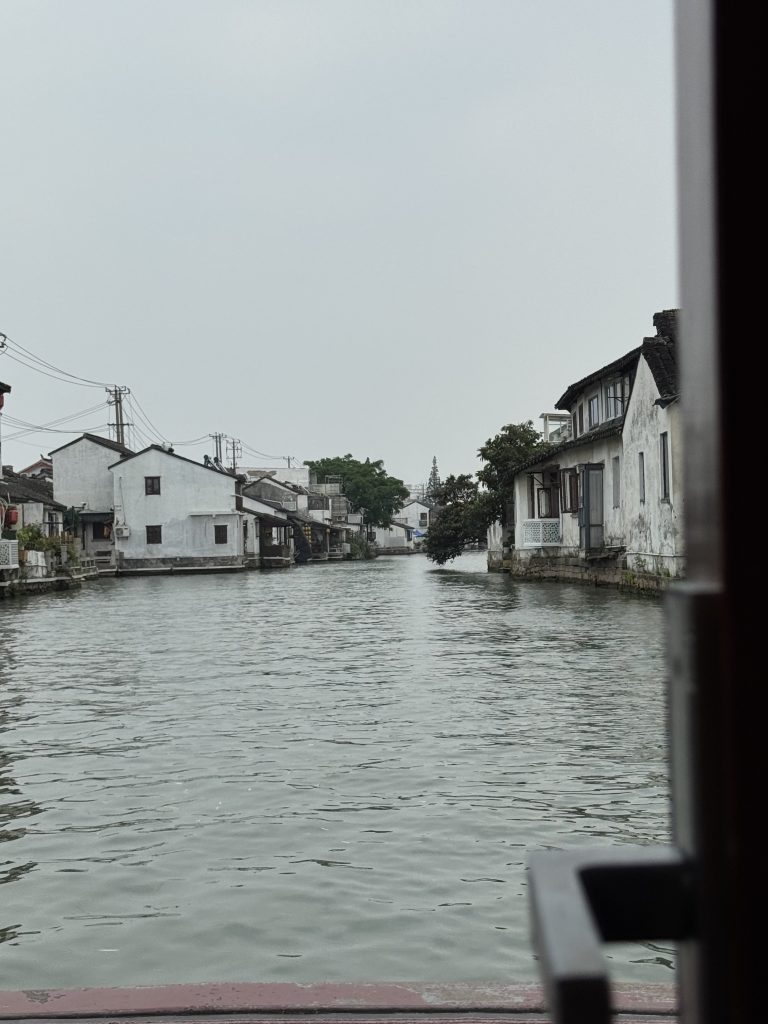
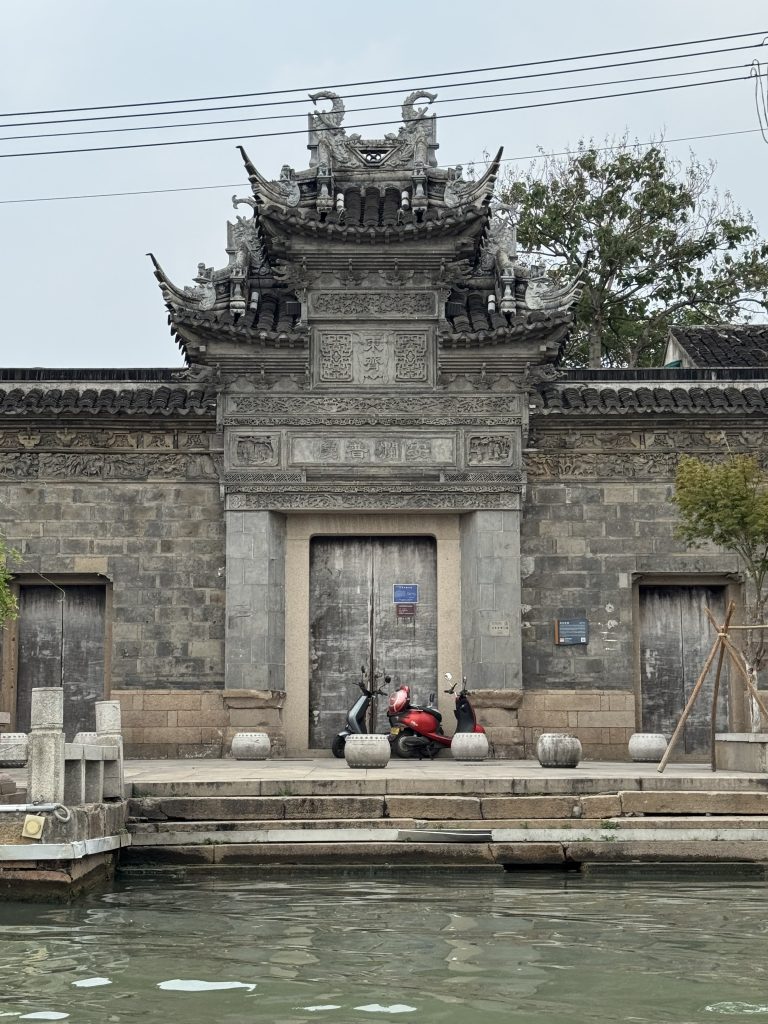
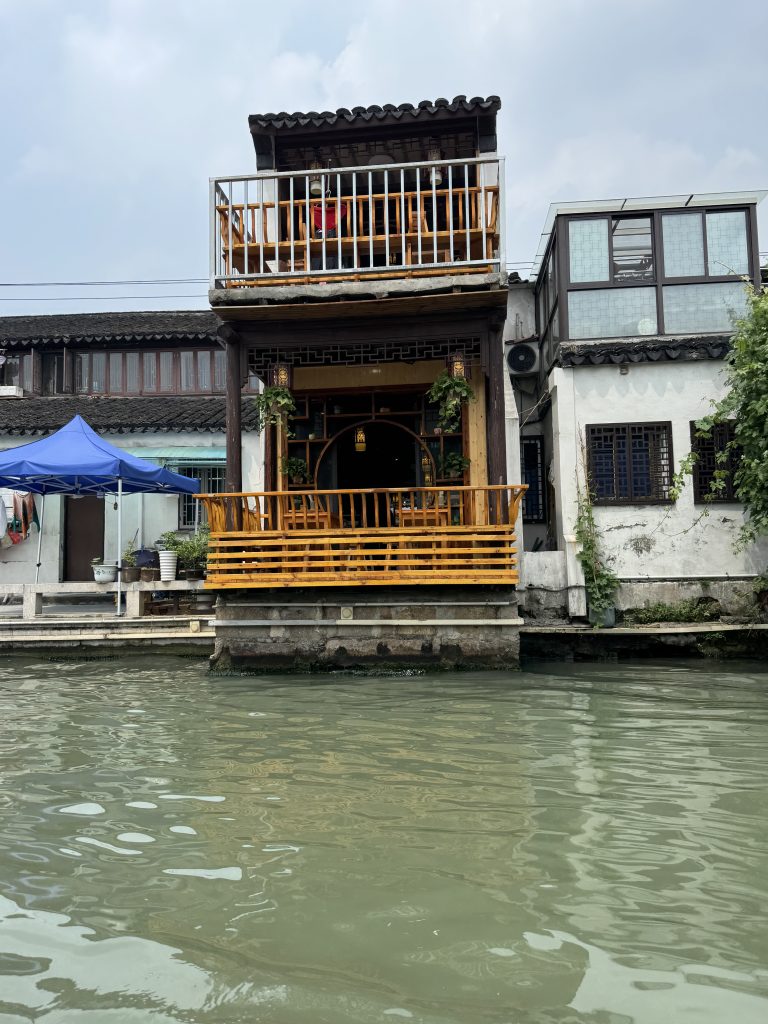
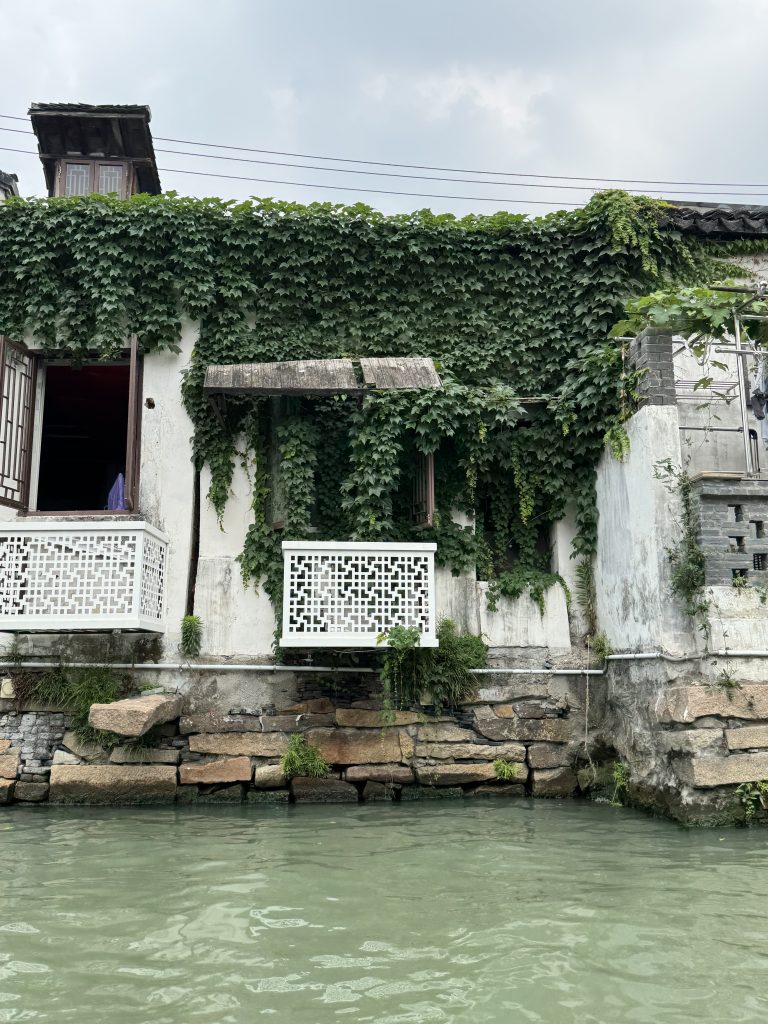
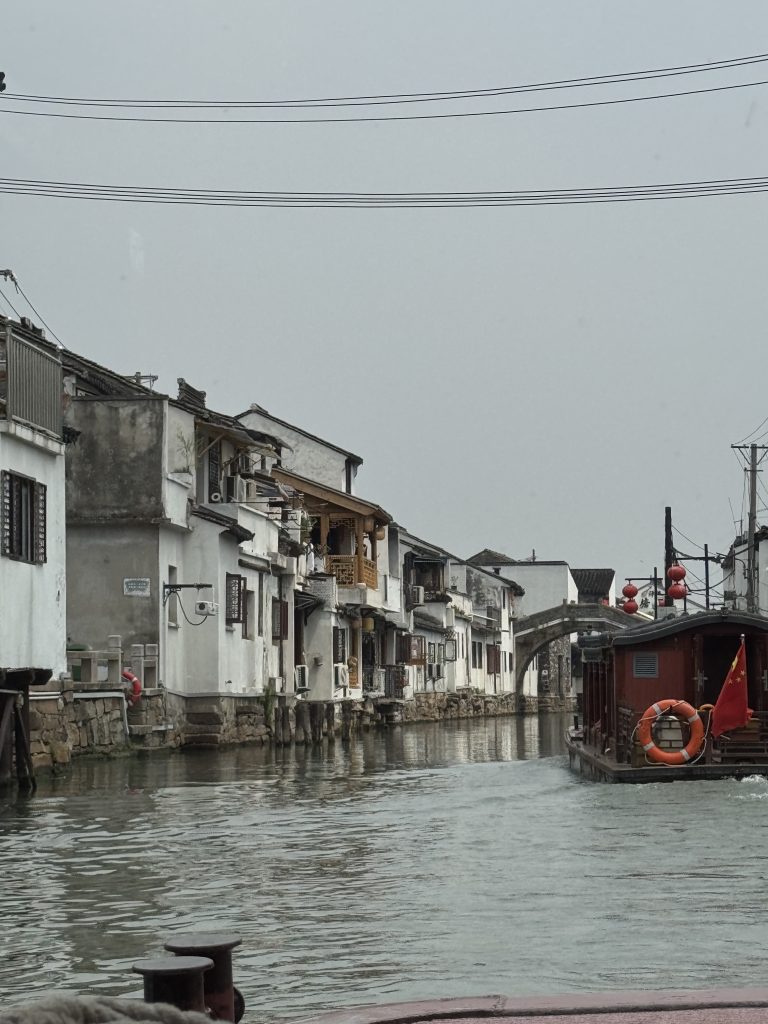
You can see why Marco Polo called it the Venice of the East.
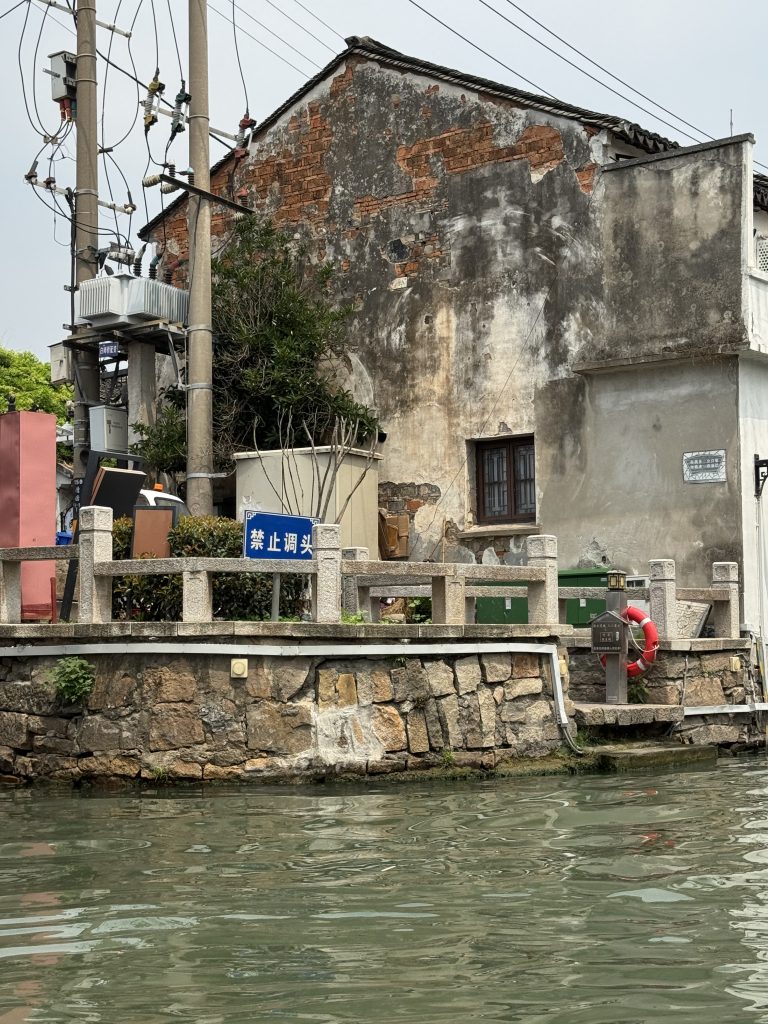
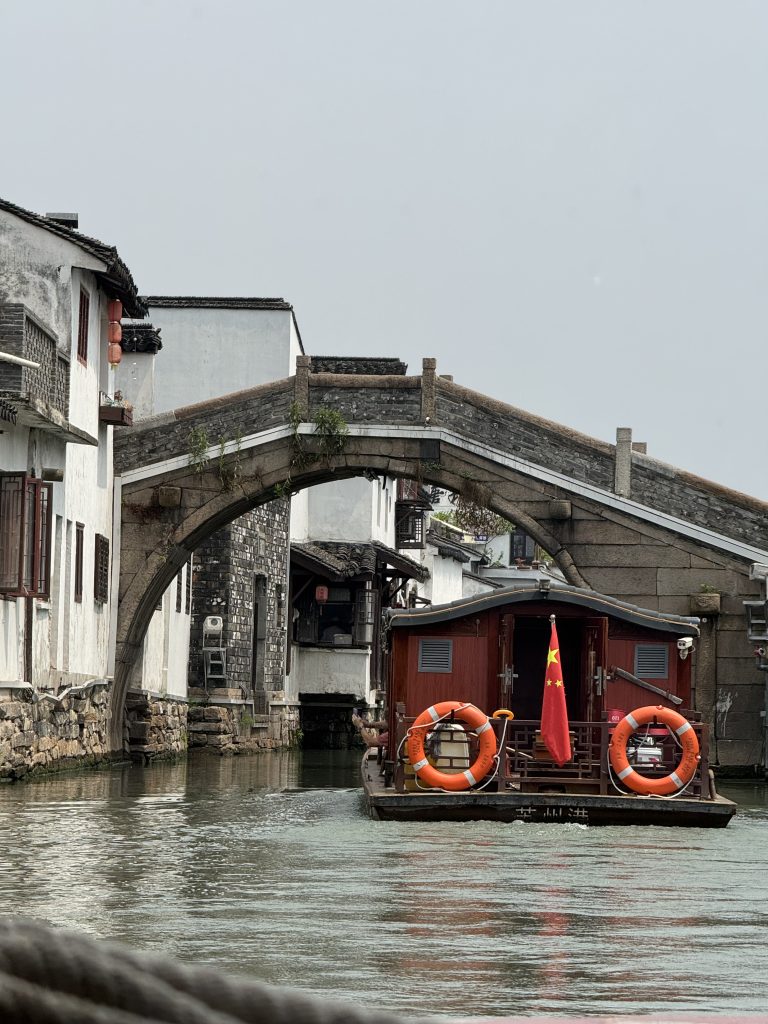
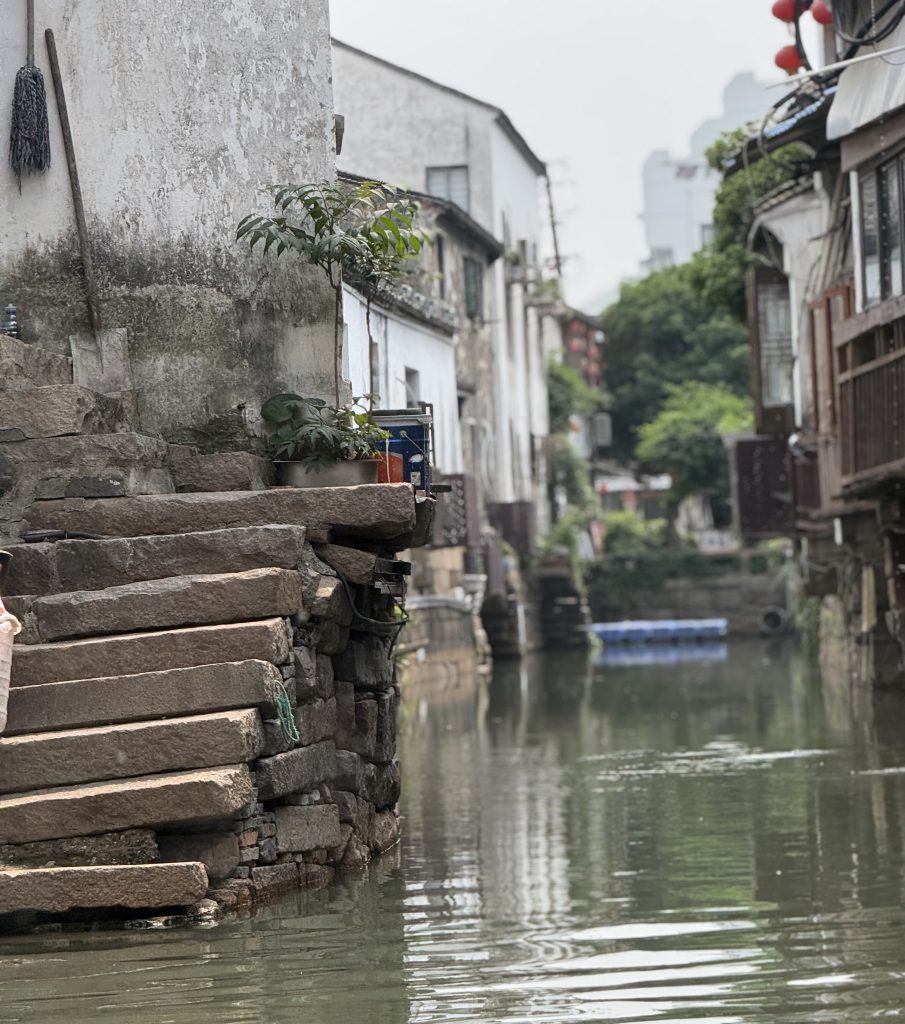
We were given an hour to wander around, grab some lunch and see the sights. We sampled pan-Fried dumplings, which Blogless Sandy liked more than I did.
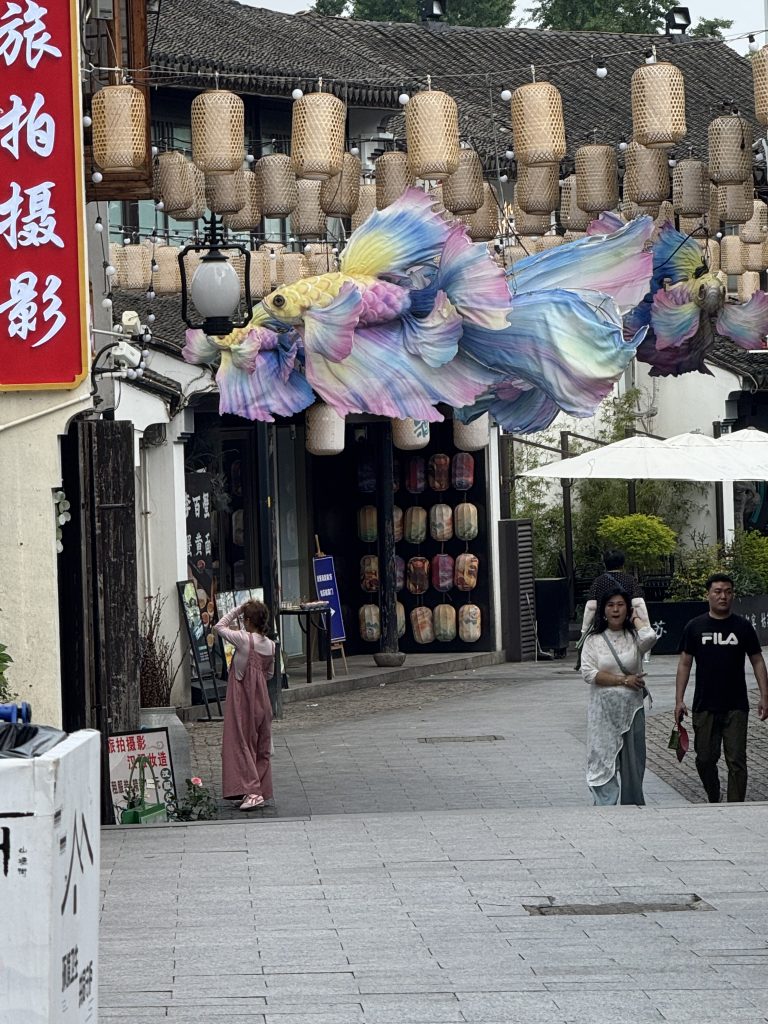
After lunch we wandered around for a while.
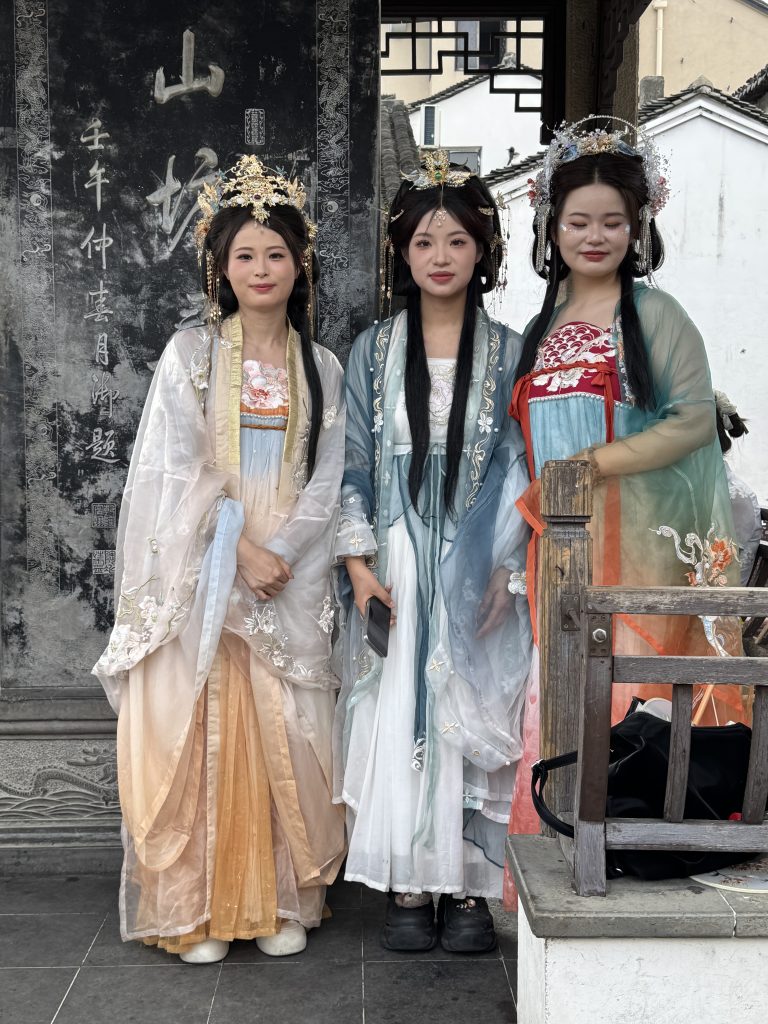
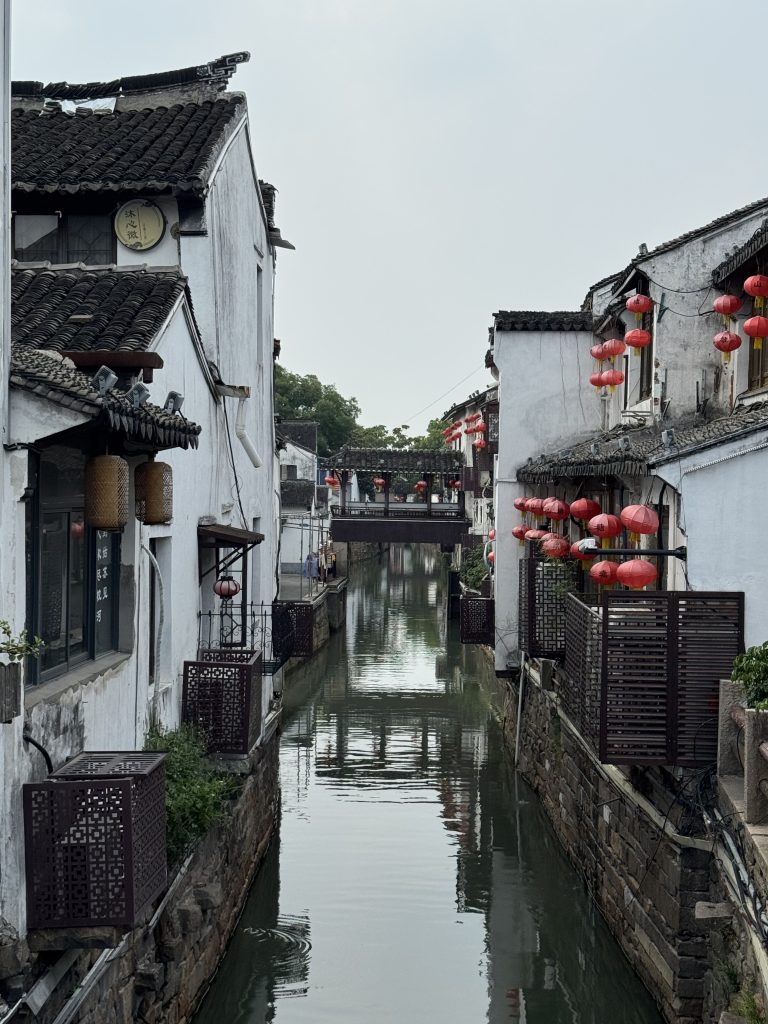
It was very pretty.

When we joined Summer again, she took us for a walk up to the old city wall.
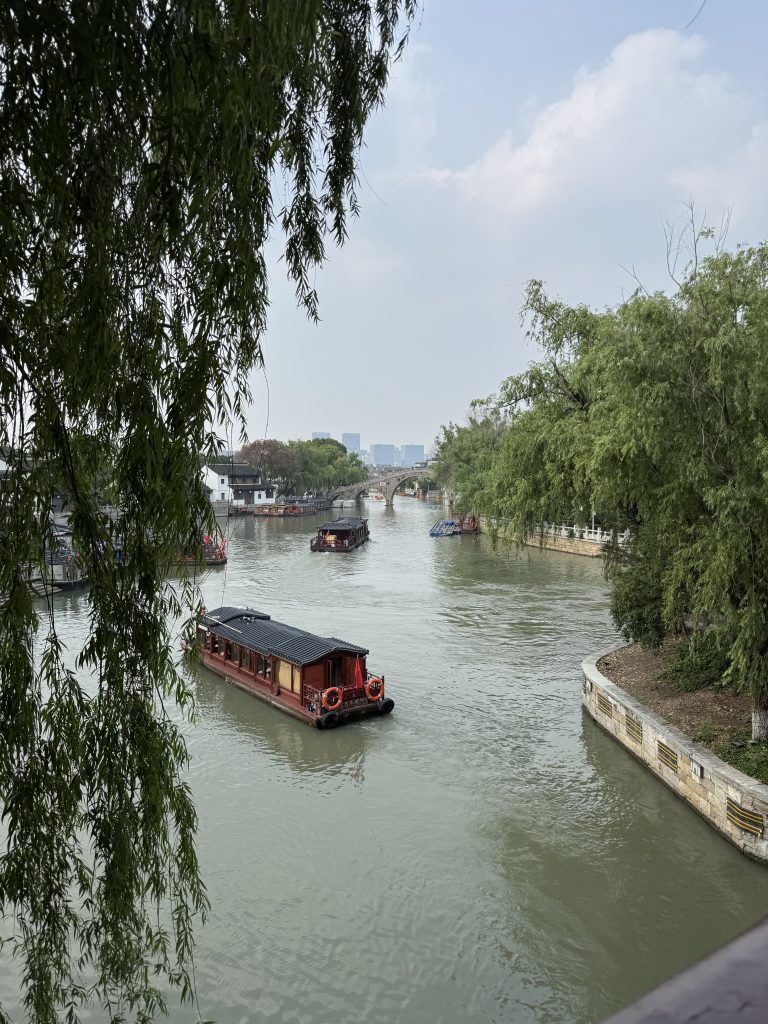
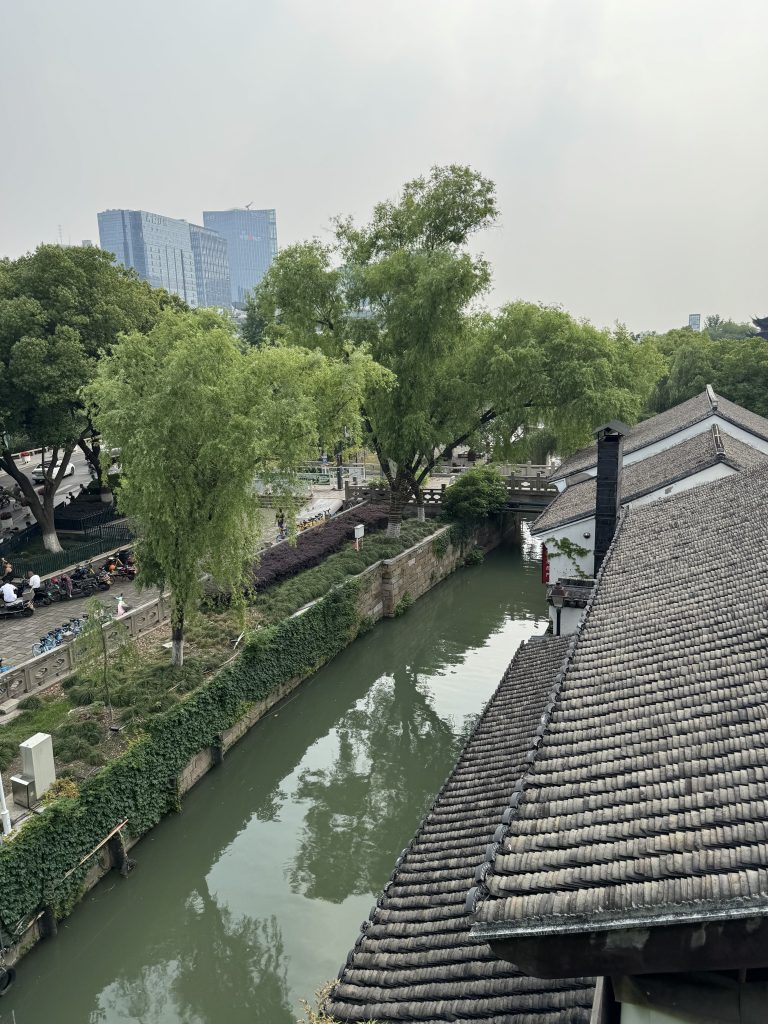
The views weren’t at all bad.
Our next stop is the city of Hangzhou. Then Shanghai, then home.
How quickly this tour has gone!
Dad Joke of the Day:

I really liked Suzhou when I was there. It made me appreciate rocks with holes.
This made Blogless Sandy and I laugh!!
I’ll be in Copenhagen in September…
Let me know if and when there’s a pause to fill in September
There probably will be. 🙂
Wonderful photos!
Thank you!
I love my new phone. 😃
I visited a bit of China in 1999, very different from now! But only around Beijing and Shanghai. Suzhou was the place I liked most, and one of the few “Venice of the North/East etc” that I found really reminded me of the real Venice (my hometown 😊)
It’s a beautiful city.